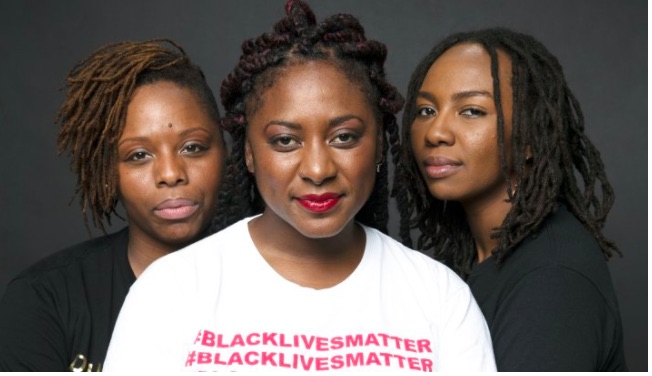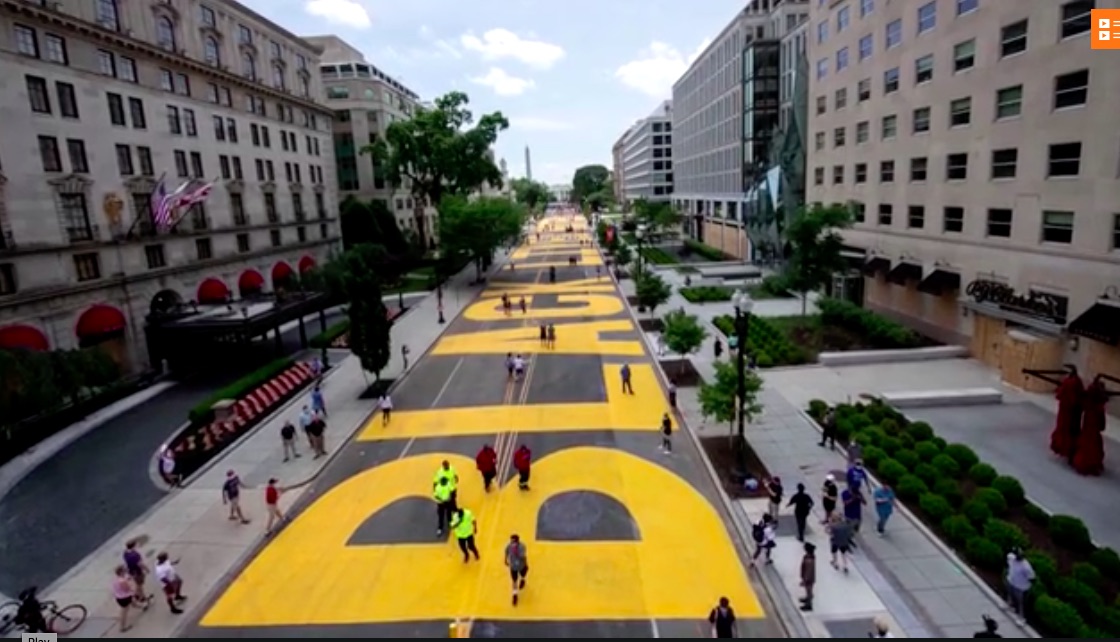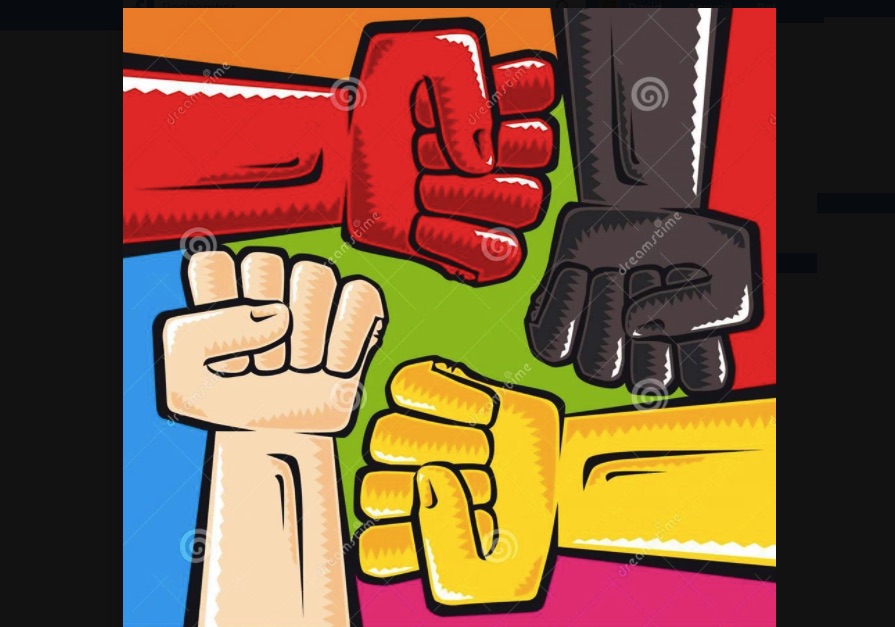. . SUSTAINABLE DEVELOPMENT . .
An article by Helen Yaffe reprinted by Transcend
The response of socialist Cuba to the global SARS-CoV2 pandemic has been outstanding both domestically and for its international contribution. That a small island nation, subjected to hundreds of years of colonialism and imperialism and, since the Revolution of 1959, six decades of the criminal United States blockade, can play such an exemplary role is due to Cuba’s socialist system. The central plan directs national resources according to a development strategy which prioritises human welfare and community participation, not private profit.
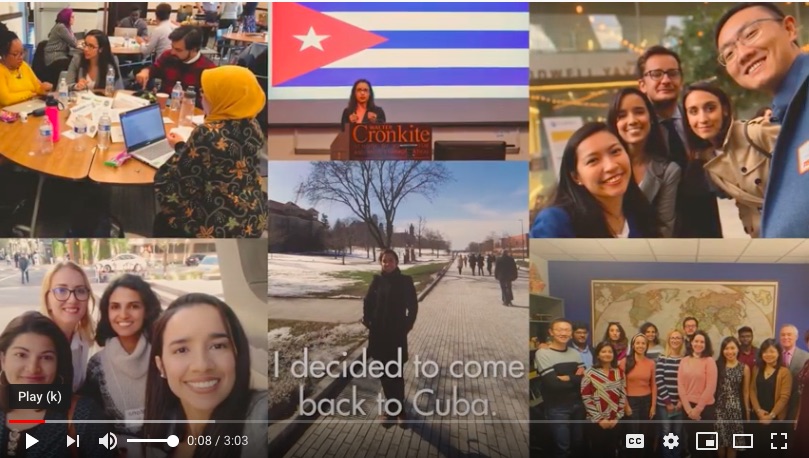 Video of Cuban Isolation Center
Video of Cuban Isolation Center
Cuban authorities reacted quickly to Chinese information about SARS-CoV2 at the start of the year. In January, authorities established a National Intersectoral Commission for COVID-19, updated their National Action Plan for Epidemics, initiated surveillance at ports, airports and marines, gave COVID-19 response training for border and immigration officials and drafted a ‘prevention and control’ plan. Cuban specialists travelled to China to learn about the new coronavirus’ behaviour and commissions of the government’s Scientific Council began to work on combating the coronavirus. Throughout February, medical facilities were reorganised, and staff trained to control the spread of the virus domestically. In early March a science and biotechnology group was created to develop COVID-19 treatments, tests, vaccines, diagnostics and other innovations. From 10 March inbound travellers were tested for COVID-19. All of this was before the virus was detected on the island.
On March 11, three Italian tourists were confirmed as the first cases of COVID-19 in Cuba. Cuban healthcare authorities stepped into action, organising neighbourhood meetings, conducting door-to-door health checks, testing, contact tracing and quarantining. This has been accompanied by education programmes and daily information updates. The population went under ‘lockdown’ on 20 March, required to abide by social distancing rules and wear facemasks when leaving homes on essential business. Business taxes and domestic debts were suspended, those hospitalised had 50% of their salaries guaranteed and low-income households qualified for social assistance and family assistance schemes, with food, medicine and other goods delivered to their homes. Workshops nationwide began to produce masks, bolstered by a grassroots movement of home production, and community mutual aids groups organised to assist the vulnerable and elderly with shopping for food as long queues became the norm. On 24 March, Cuba closed its borders to all non-residents, a tough decision given the importance of tourism revenue to the state. Anyone entering the country was required to spend a fortnight in supervised quarantine, under a testing regime. Defence Councils in the Provinces and Municipalities were activated.
In April payment of utility bills was suspended, likewise local and regional transport, while transport was guaranteed for medical staff and other essential workers. Havana and other cities were disinfected. 20 communities in six provinces were placed under total or partial quarantine. A Cuban-designed mobile phone app, ‘Virtual Screening’, went live with an opt-in application allowing users to submit an epidemiological survey for statistical analysis by the Ministry of Public Health (MINSAP). Measures were taken to keep the virus out of prisons, with active screening twice daily and no reported cases by 23 April.
By May 24, a Cuban population of 11.2 million had reported 82 deaths and fewer than 2,000 confirmed cases; 173 confirmed cases per million people, compared to 3,907 per million in Britain. Not one healthcare worker had died, although 92 had been infected by mid-April.
Cuba’s exemplary response is based on five features of its socialist development. First, its single, universal, free public healthcare system which seeks prevention over cure, with a network of family doctors responsible for community health who live among their patients. Second, Cuba’s biopharma industry which is driven by public health needs, produces nearly 70% of the medicines consumed domestically and exports to 50 countries.[1] Third, the island’s experience in civil defence and disaster risk reduction, usually in response to climate-related and natural disasters. Its internationally applauded capacity to mobilize national resources to protect human life is achieved by a network of grassroots organizations which facilitate communication and community action. Fourth, the island’s experience in operating infectious disease (border) controls. For decades, Cuba has sent healthcare professionals to countries which have infectious diseases long-since eradicated on the island and has invited tens of thousands of foreigners from those countries to study in Cuba. It has well-developed procedures for quarantining people (re)entering the island. Fifth, Cuban medical internationalism, which has seen 400,000 healthcare professionals providing free healthcare for underserved populations in 164 countries; some 28,000 medical personnel were serving in 59 countries when the pandemic began. By late May, an additional 2,300 healthcare specialists from Cuba’s Henry Reeve medical brigades, specialists in epidemiological and disaster response, had gone to 24 countries to treat patients with COVID-19.
A commitment to high-standard public healthcare
In 1959, Cuba had some 6,000 doctors but half of them soon left; only 12 of the 250 Cuban teachers at the University of Havana’s Medical School stayed. There was only one rural hospital. The revolutionary government faced the challenge of providing a high-standard public healthcare system almost from scratch. To that end, in 1960, the Rural Medical Service (RMS) was established and over the next decade hundreds of newly graduated doctors were posted in remote areas. RMS physicians served as health educators as well as clinicians. National programs were established for infectious disease control and prevention. From 1962 a national immunization program provided all Cubans with eight vaccinations free of charge. Infectious diseases were rapidly reduced, then eliminated. By 1970, the number of rural hospitals had reached 53. Not until 1976 was the pre-revolutionary ratio of doctors to citizens restored. By then, health services were available nationwide and indicators had improved significantly. A new model of community-based polyclinics was established in 1974 giving Cuban communities’ local access to primary care specialists. Training and policy emphasized the impact of biological, social, cultural, economic and environmental factors on patients. National programs focused on maternal and child health, infectious diseases, chronic non-communicable diseases, and older adult health.
In 1983, the Family Doctor and Nurse Plan was introduced nationwide. Under this system, family doctor practices were set up in neighborhoods, with either the doctor or the nurse living with their family above the practice, so medical attention is available 24 hours a day. Family doctors coordinate medical care and lead health promotion efforts, emphasizing prevention and epidemiological analysis. They rely on history-taking and clinical skills, reserving costly high-tech procedures for patients requiring them, holding patient appointments in the mornings and making house calls in the afternoons. The teams carry out neighborhood health diagnosis, melding clinical medicine with public health, and individualized ‘Continuous Assessment and Risk Evaluation’ (CARE) for their patients. Family doctors and nurses are also employed in large workplaces and schools, child day-care centers, homes for senior citizens and so on.
By 2005, Cubans had one doctor for every 167 people, the highest ratio in the world. Cuba now has 449 policlinics, each attending to 20,000 to 40,000 people and serving as a hub for 15 to 40 family doctors. There are more than 10,000 family doctors spread evenly throughout the island.
Primary Health Care as the backbone of Cuba’s response
An article in April 2020 Medicc Review describes Cuba’s primary health care system as a ‘powerful weapon’ against COVID-19. ‘Without early access to rapid tests, massive testing was clearly not in the cards as a first strategic option. However, primary health care was.’ Cuban authorities ensured that everyone in the healthcare system, including support staff, received COVID-19 training before the virus was detected. Senior medics from each province were trained at Cuba’s world-famous hospital for tropical diseases, Instituto Pedro Kourí. On returning to their provinces they then trained colleagues in the second tier – hospital and polyclinics directors. ‘Then they went on to the third tier: training for family doctors and nurses themselves, lab and radiology technicians, administrative personnel, and also housekeeping staff, ambulance drivers and orderlies. Anyone who might come into contact with a patient’, explained a polyclinic director, Dr Mayra Garcia, who is cited in the Medicc article.
Each polyclinic also trained non-health sector people in their geographical area, in workplaces, small business owners, people renting homes, especially to foreigners, or managing childcare facilities, telling them how to recognize symptoms and take protective measures. Senior medical professionals in the polyclinics were sent to family doctors’ offices as reinforcement. Medical staff were posted in local hotels to provide 24-hour detection and health care to foreigners residing there. Walk-in emergency services were re-organized to separate anyone with respiratory symptoms and to provide 24-hour assessment. Non-COVID-19 related appointments were postponed where possible or shifted to home visits for priority groups.
(Article continued on right side of page)
Question for this article:
How can we work together to overcome this medical and economic crisis?
Does Cuba promote a culture of peace?
(article continued from left side of page)
The Medicc article underscores the importance of the CARE model for combating COVID-19. All Cubans are already categorized into four groups: apparently healthy, with risk factors for disease, ill, and in recovery or rehabilitation. Doctors know the health characteristics and needs of the community they serve. ‘The CARE model also automatically alerts us to people who are more susceptible to respiratory infections, the people whose chronic diseases are the risk factors most commonly associated with complications in COVID-19 patients’ explained Dr Alejandro Fadragas.
Throughout Cuba, CDRs, or street committees, organized public health information meetings for family doctors and nurses to advise neighborhoods about the pandemic. Once the first cases were confirmed, the family doctors daily house visits were extended and became the ‘single most important tool’ for active case detection, to get ahead of the virus.[4] Some 28,000 medical students joined them going door to door to detect symptoms. This procedure means the whole population can be surveyed.
People with symptoms are remitted to their local polyclinic for rapid evaluation. Those suspected of having COVID-19 are sent on to one of the new municipal isolation centers established throughout the island. They must remain for a minimum of 14 days, receiving testing and medical attention. If the case appears to be another respiratory illness, they return home but must stay indoors for at least 14 days, followed up in primary care. Hospitals are reserved for patients who really need them.
Primary healthcare professionals are also responsible for rapid contact tracing for all suspected cases; those contacts are tested and must isolate at home. In addition, the homes and communal entrances of patients sent to isolation centers are disinfected by ‘rapid response’ teams consisting of polyclinic directors and vice directors, alongside family members. Family doctors’ offices are also disinfected daily. Meanwhile, workers in hotels where foreigners are lodged are checked daily by medical staff. The polyclinic provides them with PPE and disinfectants. Polyclinics and family doctors are also responsible for 14 days follow-up for COVID-19 patients discharged from hospitals.
Home-grown medicine
The Cuban treatment protocol for COVID-19 patients includes 22 drugs, most produced domestically. The focus has been placed on prevention, with measures to improve innate immunity. Early on the potential of Cuba’s anti-viral drug Heberon, an interferon Alfa 2b human recombinant (IFNrec), was identified. The biotech product has proven effective for viral diseases including hepatitis types B and C, shingles, HIV-AIDS, and dengue. Produced in Cuba since 1986 and in China since 2003 through a Cuban-Chinese joint venture, ChangHeber, in January 2020 it was selected by the Chinese National Health Commission among 30 treatments for COVID-19 patients. It soon topped their list of anti-viral drugs, having demonstrated good results.
The drug has most efficacies when used preventatively and at early stages of infection. In Wuhan, China, nearly 3,000 medical personnel received Heberon as a preventative measure to boast their immune response; none of them contracted the virus. Meanwhile, 50% of another 3,300 medics who were not given the drug did get COVID-19. Cuba’s IFNrec is recommended in the medical protocols of several countries, by the World Health Organisation (WHO), Johns Hopkins Medical Centre and the World Journal of Paediatrics among others. The product was already registered in Algeria, Argentina, Chile, Ecuador, Jamaica, Thailand, Venezuela, Vietnam, Yemen and Uruguay. By mid-April requests for its use had been received from some 80 countries and it was being administered by Cuba’s Henry Reeve medical brigades treating COVID-19 patients overseas. On 14 April it was reported that 93.4% of COVID-19 patients in Cuba had been treated with Heberon and only 5.5% of those had reached a serious state. The mortality rate reported by that date was 2.7% but for patients treated with Heberon it was just 0.9%.
Other Cuban medicines reporting promising results include:
Biomodulina T, a immunomodulator which stimulates the immune systems of vulnerable individuals and has been used in Cuba for 12 years, principally to treat recurrent respiratory infections in the elderly.
The monoclonal antibody Itolizumab (Anti-CD6), used to treat lymphomas and leukemia, administered to COVID-19 patients in a severe or critical condition to reduce the secretion of inflammatory cytokines, which cause the massive flow of substances and liquid in the lungs.
CIGB-258, a new immunomodulatory peptide designed to reduce inflammatory processes. By 22 May, 52 COVID-19 patients had been treated with CIGB-258; among those in a severe stage, the survival rate was 92%, against a global average of 20%. For those in a critical condition the survival rate was 78%.
Blood plasma from recovered patients.
Cuban medical scientists are producing their own version of Kaletra, an antiretroviral combination of Lopinavir and Ritonavir, used to treat HIV/AIDS. Domestic production will eliminate costly imports from capitalist big pharma and subject to the US blockade. Meanwhile, the homeopathic medicine, Prevengho-Vir, which is believed to strengthen the immune system has been distributed for free to everyone on the island. Medical scientists are evaluating two vaccines to stimulate the immune system and four candidates for specific preventative vaccine for COVID-19 are under design.
By early May, Cuban scientists had adapted SUMA, a Cuban computerized diagnostic system, to detect antibodies for COVID-19 rapidly, allowing for mass testing at low cost. ‘The objective is to find new cases and then intervene, isolate, seek contacts, and take all possible measures to ensure that Cuba continues as it is now’, said Cuba’s top epidemiologist, Francisco Durán during his daily televised update on 11 May. This means the island no longer relies on donated tests or expensive ones purchased internationally. Cuba’s comparatively high rate of testing is set to soar.
BioCubaFarma is mass producing facemasks, personal protective equipment (PPE) and medical and sanitary products, as well as coordinating state enterprises and self-employed workers to repair vital equipment, such as breathing ventilators. Cuban efforts to purchase new ventilators have been obstructed by the US blockade which, for almost 60 years, has included food and medicines among its prohibitions.
Leading the global fight
On March 18, Cuba allowed the cruise ship MS Braemar, with 684 mostly British passengers and 5 confirmed COVID-19 cases, to dock in Havana after a week stranded at sea, having been refused entry by Curacao, Barbados, Bahamas, Dominican Republic and the United States. Cuban authorities facilitated their safe transfer to charter flights for repatriation. Three days later, a 53-strong Cuban medical brigade arrived in Lombardy, Italy, at that time the epicenter of the pandemic, to assist local healthcare authorities. The medics were members of Cuba’s Henry Reeve Contingent, which received a World Health Organization (WHO) Public Health Prize in 2017 in recognition for providing free emergency medical aid. It was the first Cuban medical mission to Europe. By 21 May, over 2,300 Cuban healthcare professionals had gone to 24 countries to treat COVID-19 patients, including a second brigade in northern Italy and another to the European principality Andorra.
The threat of a good example
Cuban medical internationalism began in 1960, but the export of healthcare professionals was not a source of state revenue until the mid-2000s with the famous ‘oil for doctors’ program under which 30,000 Cuban healthcare workers served in Venezuela. US President Bush’s administration responded by attempting sabotage Cuba’s medical export earnings with the Cuban Medical Parole Programme. This induced Cuban professionals, who had paid no tuition costs, graduated debt free and voluntarily signed contracts to work abroad assisting underserved populations, to abandon missions in return for US citizenship. President Obama kept the Programme, even while praising Cuban medics combating Ebola in West Africa. It was ended in his last days in office in January 2017.
The Trump administration has renewed attacks on Cuban medical missions, fuelling their expulsion from Brazil, Ecuador and Bolivia, and leaving millions of people in those countries without healthcare. The motivation was the same; to block revenues to a nation which has survived 60 years of US hostility. In the context of the pandemic, when the US government’s wilful failures have resulted in tens of thousands of unnecessary deaths, socialist Cuba’s global leadership has represented the threat of a good example. Lashing out, the US State Department has labelled Cuban medics as ‘slaves’, claiming that the Cuban government seeks revenues and political influence. It has pressured beneficiary countries to reject Cuban assistance in their time of urgent need. These attacks are particularly vile; it is likely that Cuba is receiving no payment, beyond costs, for this assistance.
Meanwhile, the criminal US blockade, which has been punitively tightened under Trump, is preventing the purchase of urgently needed ventilators for Cuba’s own COVID-19 patients. A Chinese donation to Cuba of medical equipment was blocked because the airline carrying the goods would not travel to Cuba for fear of US fines. There is now a growing international demand for an end to all sanctions, not least against Cuba which has shown global leadership in combating the SARS-CoV2 pandemic. We must all add our voices to this demand. There are also calls from organisations and individuals worldwide to nominate Cuba’s Henry Reeve Contingents for a Nobel Peace Prize. What is clear from its history of principled medical internationalism is that, with recognition or without, revolutionary Cuba will continue to fight for global healthcare wherever its citizens, and its example, can reach.
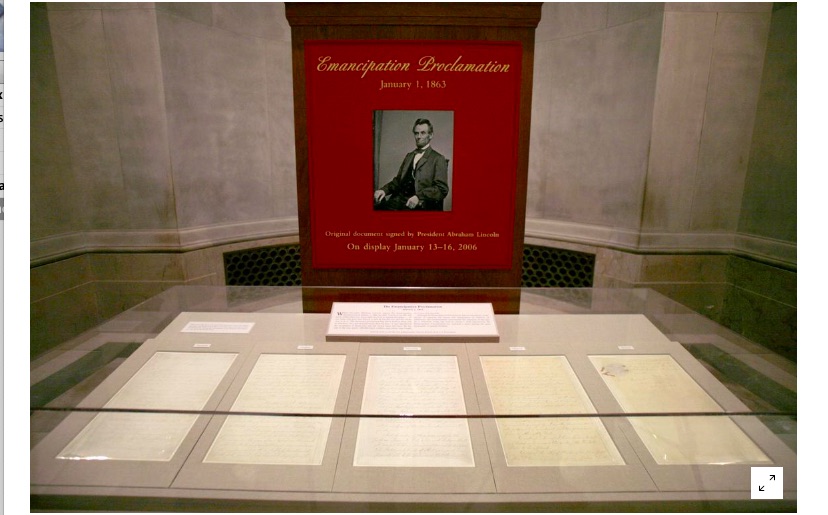
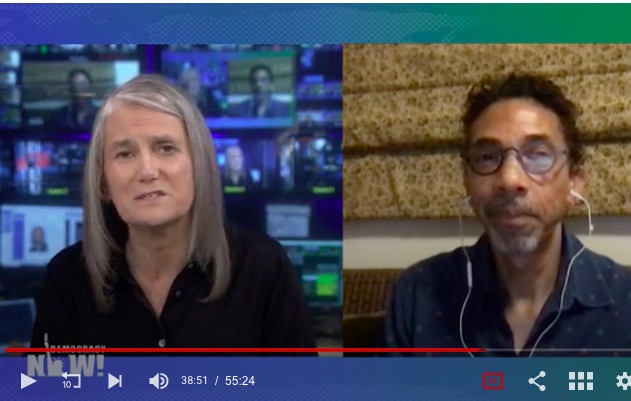

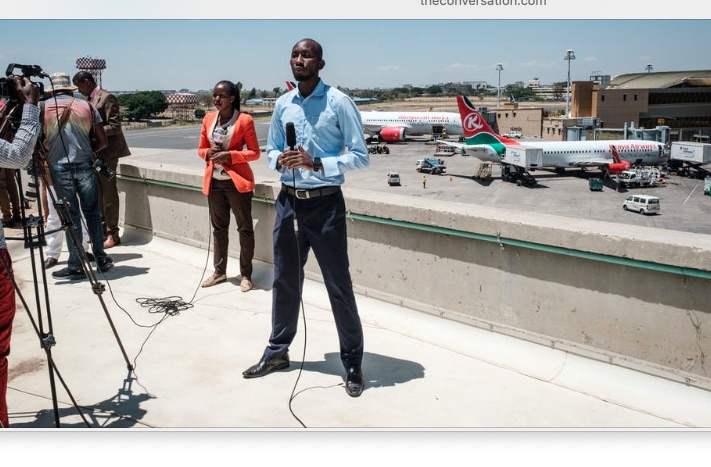
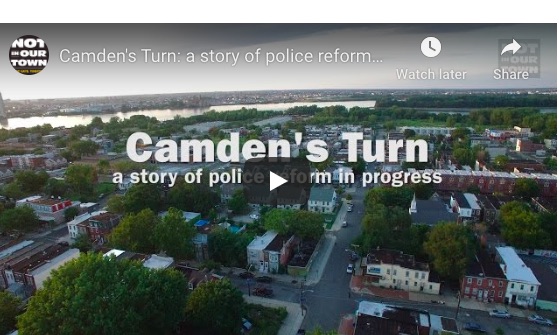
 Video of Cuban Isolation Center
Video of Cuban Isolation Center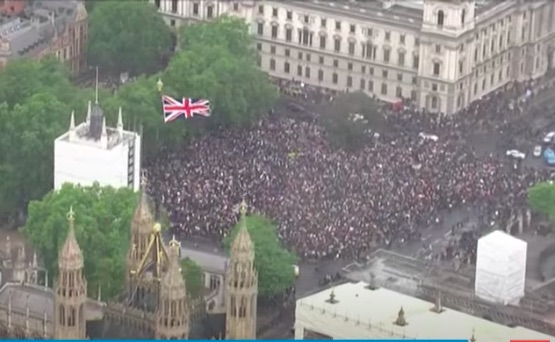
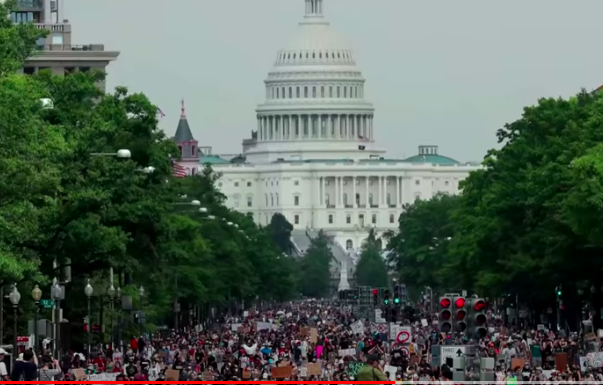 Reuters Video of Washington demonstations
Reuters Video of Washington demonstations Another website with many photos of the demonstrations throughout the United States
Another website with many photos of the demonstrations throughout the United States